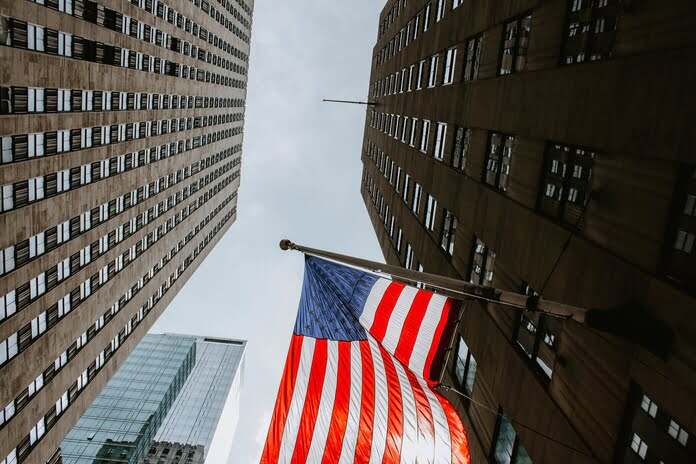US Economy
The economic expansion of the United States achieved a 2.1% annual momentum between April and June, demonstrating that the US economy is enduring resilience despite heightened borrowing expenses for both consumers and businesses. The government, in a reassessment from its initial projection, conveyed this information on Wednesday.
Initial estimates had indicated a higher annual growth rate of 2.4% for the previous quarter’s economic expansion.
The Commerce Department’s second evaluation of last quarter’s growth showcased a modest acceleration from the 2% annual growth rate recorded from January through March. Despite the Federal Reserve’s rigorous efforts to curb inflation through interest rate hikes, the economy has maintained its upward trajectory, with ongoing recruitment by employers and sustained consumer expenditures.
The latest report on the nation’s gross domestic product (GDP) spotlighted the influence of increased consumer spending, heightened business investments, and augmented expenditures by local and state governments in propelling growth during the last quarter. Additionally, a gauge of consumer prices within the report demonstrated a reduction in inflation, potentially alleviating the pressure on the Federal Reserve to enact further interest rate hikes.
Eugenio Aleman, Chief Economist at Raymond James, remarked, “Diminished growth and more subdued price increments bode well for the Federal Reserve.”
Within the April-June quarter, consumer spending, constituting roughly 70% of the US economy, grew at an annual pace of 1.7% — a respectable advancement, though notably lower than the 4.2% seen in the initial three months of 2023. When excluding housing, business investments in the last quarter displayed robust growth at an annual rate of 6.1%. However, housing investments experienced a decline during the second quarter, attributed to increased mortgage rates.
Amidst the Federal Reserve’s proactive campaign to suppress a resurgence of inflation, which had reached a four-decade peak the previous year, the world’s largest economy has exhibited unexpected robustness. Over the past year, the Federal Reserve has raised its benchmark rate 11 times, resulting in higher costs for borrowing across sectors ranging from automobiles to real estate and business expansions, fueling widespread speculations of an imminent recession.
Following its zenith of 9.1% in June 2022, year-over-year inflation has experienced a relatively consistent decline. In the past month, it stood at 3.2%, representing a significant improvement although still surpassing the Federal Reserve’s 2% inflation target. Excluding the volatile costs of food and energy, the core inflation, referred to as such, recorded its smallest monthly uptick in almost two years during July.
One metric of prices within the GDP report — the personal consumption expenditures index — increased at an annual rate of 2.5% during the last quarter. This marks a decrease from the 4.1% pace observed in the January-March quarter and constitutes the most modest upswing since the conclusion of 2020.
Since the initiation of the Federal Reserve’s rate hikes, the economy has been buttressed by a consistently robust job market. Employers, this year, have been adding an average of 258,000 jobs each month, although this average has moderated to 218,000 over the past three months.
Tuesday’s government report provided further evidence of a gradual weakening in the job market: it disclosed a considerable decrease in job openings in July, accompanied by a decline in the number of individuals voluntarily leaving their jobs for the second consecutive month. (A reduction in job departures typically indicates decreased confidence in finding new employment opportunities.)
However, job openings continue to surpass levels from before the pandemic. The nation’s unemployment rate, standing at 3.5%, remains marginally higher than the lows witnessed over the past five years. As the government releases the August jobs report on Friday, economists surveyed by data firm FactSet anticipate that while the pace of hiring decelerated, employers still managed to add 170,000 jobs.
The convergence of receding inflation, sustained economic growth, and a more gradual yet consistent pace of hiring has fostered optimism for an infrequent occurrence termed a “soft landing.” In this scenario, the Federal Reserve successfully reins in heightened inflation without instigating a distressing recession.
The government’s second of three estimates regarding last quarter’s growth, issued on Wednesday, will be succeeded by a final calculation towards the end of next month.
Featured Image: Freepik @ wirestock

















